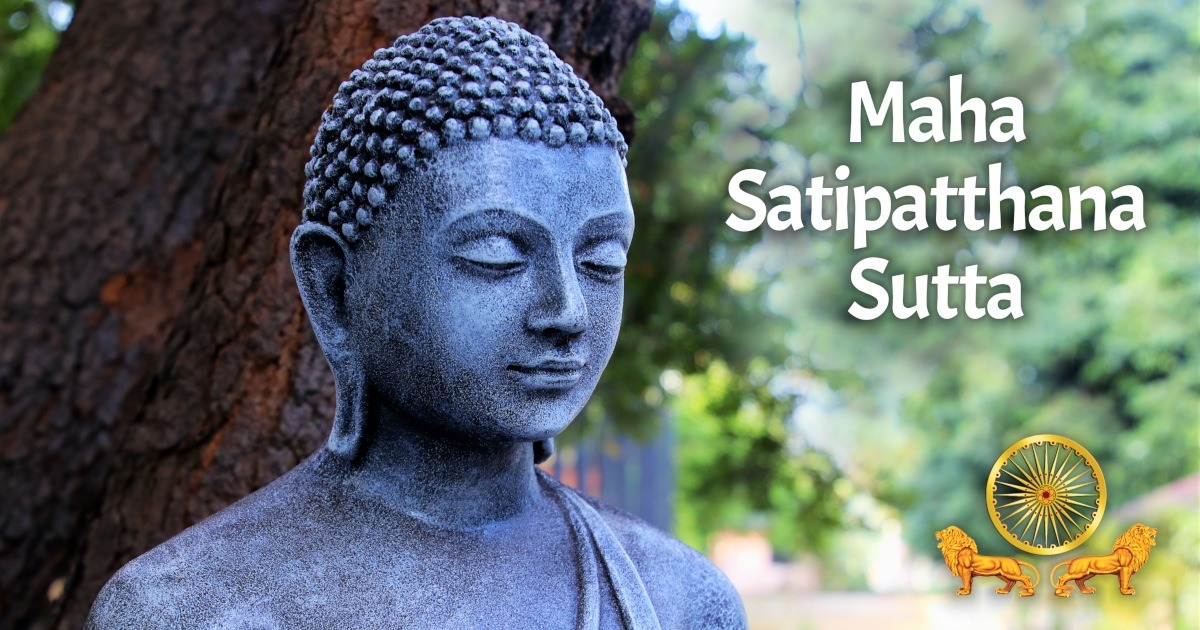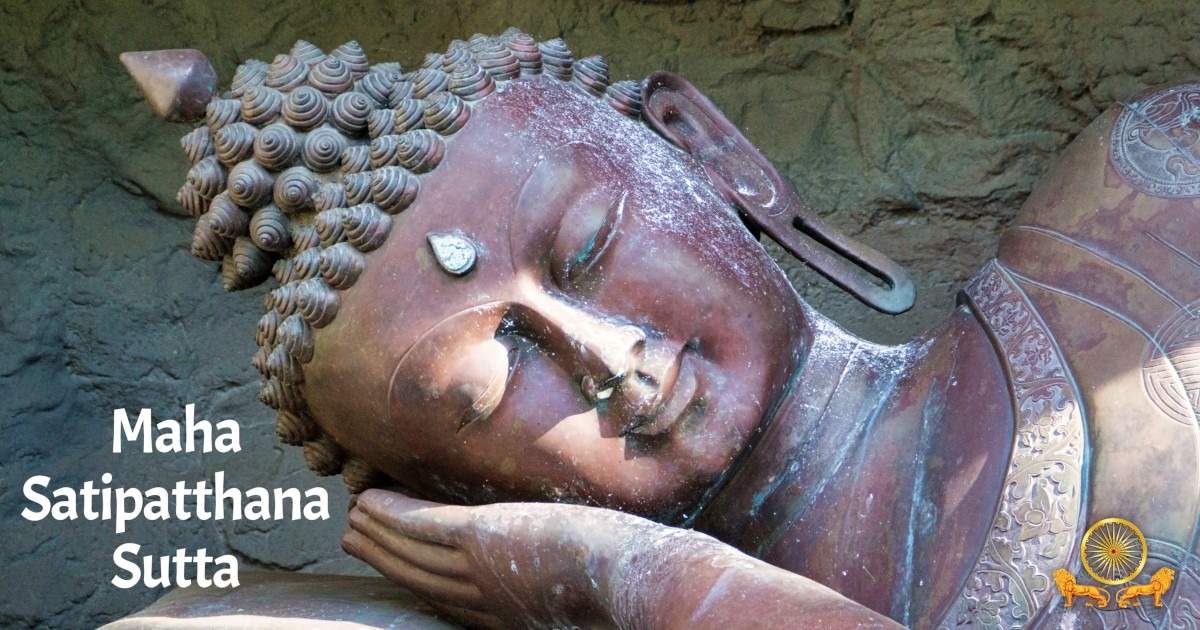Uddeso: Introduction
Evaṁ me sutaṁ: / Ekaṁ samayaṁ bhagavā / kurūsu viharati, kammāssadammaṁ nāma kurūnaṁ nigamo./ Tatra kho bhagavā bhikkhū āmantesi,/ bhikkhavo’ti. / Bhadante’ti te bhikkhu bhagavato paccassosuṁ./ Bhagavā etadavoca:/
“Thus have I heard. On one occasion • the Blessed One was living in the Kuru country, • in the town of Kammāsadamma of Kuru people.“There the Blessed One addressed the monks saying, “Monks.” “Bhante,” the monks replied to the Blessed One. • Then the Blessed One said this:
Ekāyano ayaṁ bhikkhave maggo,/ sattānaṁ visuddhiyā,/ sokapariddavānaṁ samatikkamāya,/ dukkhadomanassānaṁ atthaṅgamāya,/ ñāyassa adhigamāya,/ nibbānassa sacchikiriyāya./ Yadidaṁ cattāro satipaṭṭhānā./ Katame cattāro?/
“Monks, this is the one and only path • for the purification of beings, • for the overcoming of sorrow and lamentation, • for the disappearance of pain and grief, • for the attainment of the higher knowledge, • and for the realization of Nibbāna. “Namely, the four establishments of mindfulness. What are the four?
Idha bhikkhave, bhikkhu / kāye kāyānupassī viharati./ Ātāpī, sampajāno, satimā,/ vineyya loke abhijjhādomanassaṁ./
Here, monks, a monk dwells contemplating the body in body, • dedicated, fully aware, and mindful, • having put away greed and grief for the world.
Vedanāsu vedanānupassī viharati,/ ātāpī, sampajāno, satimā,/ vineyya loke abhijjhā domanassaṁ./
“He dwells contemplating the feelings in feelings, • dedicated, fully aware, and mindful, • having put away greed and grief for the world.
Citte cittānupassī viharati,/ ātāpī, sampajāno, satimā,/ vineyya loke abhijjhā domanassaṁ./
“He dwells contemplating the mind in mind, • dedicated, fully aware, and mindful, • having put away greed and grief for the world.
Dhammesu dhammānupassī viharati,/ ātāpī, sampajāno, satimā,/ vineyya loke abhijjhā domanassaṁ./
“He dwells contemplating the phenomena in phenomena, • dedicated, fully aware, and mindful, • having put away greed and grief for the world.
- Uddeso: Introduction
- 1. Kāyānupassanā: The Observation of Body
- 1.1 Ānāpāna Pabbaṁ: Section on Breathing
- 1.2. Iriyāpatha Pabbaṁ: Section on Postures
- 1.3 Sampajañña Pabbaṁ: Section on Clear Comprehension
- 1.4 Paṭikūlamanasikāra Pabbaṁ: Section on Repulsiveness
- 1.5 Dhātumanasikāra Pabbaṁ: Reflections on the Elements
- 1.6 Navasīvathika Pabbaṁ: Nine Charnel-Ground Contemplations
- 2. Vedanānupassanā: Contemplation of Feeling
- 3. Cittānupassanā: Contemplation of Mind
- 4. Dhammānupassanā: Contemplation of Phenomena
- 4.1 Nīvaraṇa Pabbaṁ: Section on the Hindrances
- 4.2 Khandha Pabbaṁ: Section on the Aggregates
- 4.3 Āyatana Pabbaṁ: Section on the Sense Bases
- 4.4 Bojjhanga Pabbaṁ: Section on the Factors of Enlightenment
- 4.5 Sacca Pabbaṁ: Section on the Four Noble Truths
- Satipaṭṭhāna Bhāvanānisaṁso: The Results of the Establishing of Mindfulness

Learn how to purchase on the main book page.




















Leave A Comment